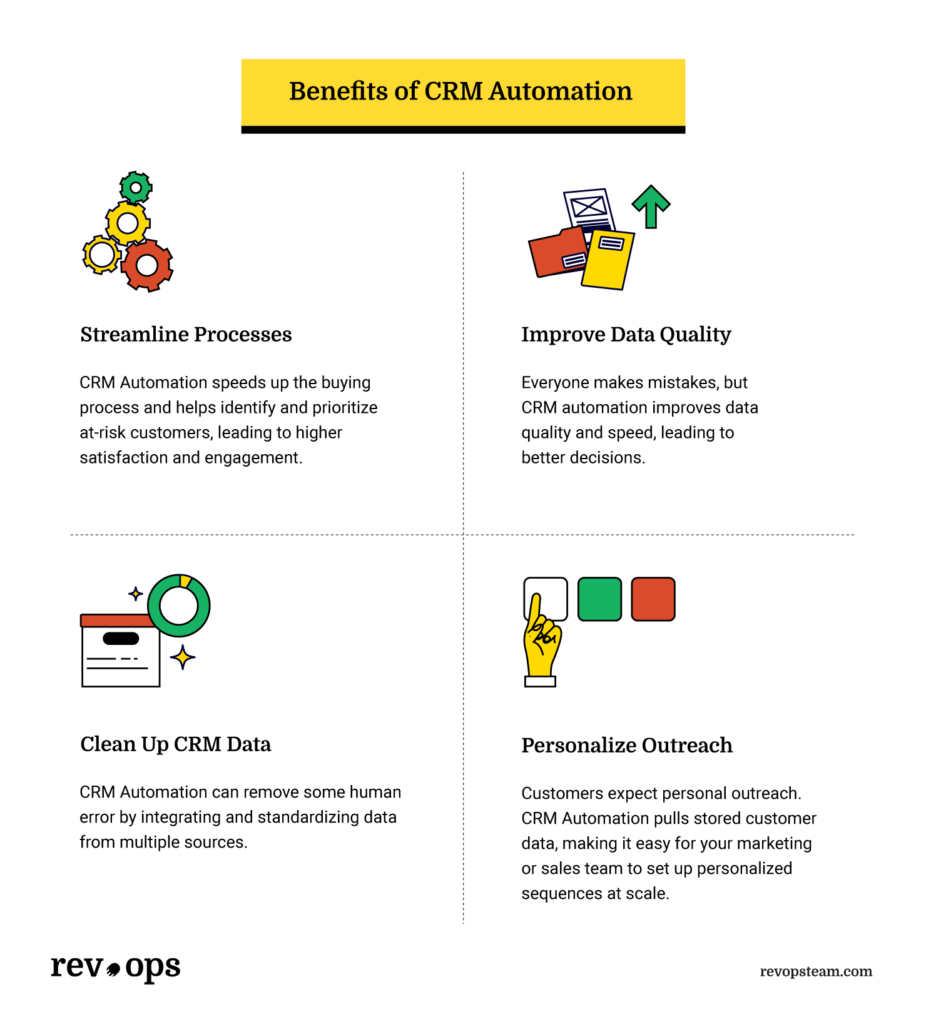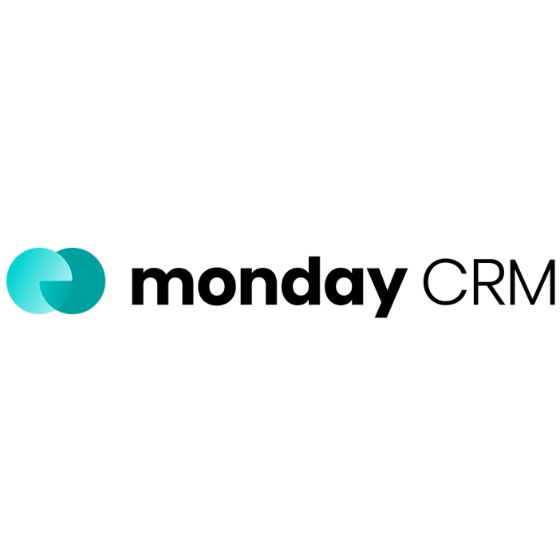CRM automation makes the time-consuming, repetitive tasks that plague go-to-market (GTM) team members a thing of the past.
Here are 4 easy ways to use CRM automation to drive productivity, efficiency, and revenue.
What Is CRM Automation?

CRM automation is a series of automatic workflows built to optimize the sales, marketing, and customer success processes that rely on CRM software.
It can take care of the tedious, repetitive tasks of CRM data management, so your team can focus on the important priorities that drive revenue growth while ensuring the day-to-day tasks get completed with accuracy.
Automation is available on most major CRM software tools, including:
-

monday CRM
Visit WebsiteThis is an aggregated rating for this tool including ratings from Crozdesk users and ratings from other sites.4.6 -

Pipedrive CRM
Visit WebsiteThis is an aggregated rating for this tool including ratings from Crozdesk users and ratings from other sites.4.3 -

Salesforce CRM
Visit WebsiteThis is an aggregated rating for this tool including ratings from Crozdesk users and ratings from other sites.4.2
Benefits Of CRM Automation

The number one benefit of CRM automation is that it makes your GTM team's lives easier. It removes manual steps and speeds up processes—must-haves in fast-paced environments like B2B SaaS.
More granularly, CRM automation can:
Streamline Processes
Process improvement, streamlining, and alignment are core responsibilities of a revenue operations team. CRM automation can make these happen by limiting manual work across teams and reinforcing consistent procedures for things like lead acquisition, sales quoting, and contract management.
Shorten Sales Cycles
CRM automation enables you to move customers through the buying experience faster, increasing Time-to-Value and boosting your CRM ROI.
Customers who experience your product or service faster, are proven to have higher customer satisfaction and engagement.
Clean Up CRM Data
Humans make mistakes, whether it’s an incorrect phone number, a misspelled company name, or an incomplete note. CRM automation can remove some human error by integrating and standardizing data from multiple sources.
With higher data quality, you net more accurate data analytics and CRM reporting, which leads to better, more informed decisions. Not only will your data quality improve, but the speed at which it gets updated will increase exponentially.
(Psst, we've got even more best practices for CRM management here).
Personalize Outreach
Customers expect personal outreach. CRM automation pulls stored customer data like name or company, making it easy for your marketing or sales team to set up personalized nurturing sequences at scale. More on that below.
CRM Automation Vs. Marketing Automation

CRM automation and marketing automation, while often overlapping in functionality, serve distinct purposes in the management of customer relationships and marketing efforts.
They both help to automate critical business processes, but CRM automation is more generalized for the entire organization.
Marketing automation focuses on sending the correct messaging to the correct prospects to create interest. It includes tools for email marketing, social media campaigns, lead generation, lead nurturing, and segmentation.
Regardless of the use case, automation can be a powerful way to increase productivity across all business functions. Need more proof? Take a look at these statistics on the benefits CRM automation and adoption.
4 Workflows To Get Started with CRM Automation
1. Sales Workflow CRM Automation
This automation streamlines various stages of the sales process, such as automatically assigning tasks to sales reps, setting reminders for follow-up, and updating deal stages, which helps move leads through the sales funnel more efficiently.

2. Data Entry CRM Automation
Data entry automation reduces manual work by automatically capturing and updating customer information from various sources, ensuring that customer records are always current and reducing the chances of errors.
While some of this enrichment can come from outside of your CRM (tools like Clearbit, Zoominfo, etc.), keeping information clean across multiple objects within your CRM can be incredibly powerful—especially for CRM analytics.

3. Lead Scoring CRM Automation
Automatically score leads and categorize them based on their interaction with your business with this automation. This helps prioritize high-potential leads, ensuring they receive timely attention.
4. Customer Health Score CRM Automation
On the flip side, a similar automation can be built to score your existing customers. With proper health scoring in place, Account Managers and CSMs can more easily structure their day to focus on at-risk accounts.

Optimize Workflows with CRM Automation
CRM automation is a transformative tool for any GTM team, providing a critical bridge between managing a growing customer base and maintaining personal, meaningful interactions.
By automating routine tasks, CRM systems like Salesforce and HubSpot empower teams to shift their focus from manual, time-consuming activities to strategic, revenue-driving initiatives.
This shift not only boosts productivity but also enriches the customer experience, ensuring each interaction with your business is impactful and value-driven.
Embracing this technology is not just a step towards operational efficiency; it's a leap towards building a more responsive, customer-centric, and successful business in today's fast-paced Revenue Operations landscape.
Ready to take your RevOps to the next level? Sign up for tips, trends, and reviews from The RevOps Team.






